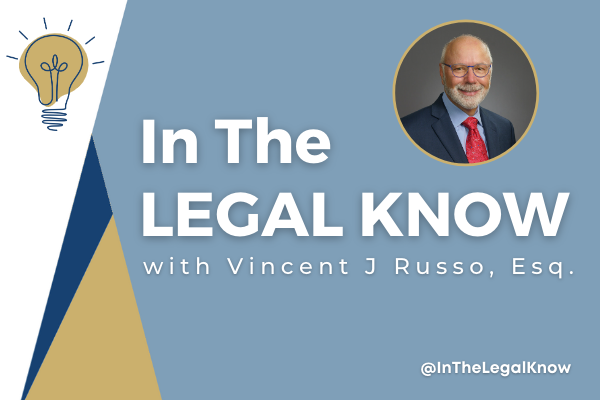Watch “In The Legal Know” with Vincent J. Russo Vincent appeared on CFN Live on…
Trusts and Problems to Avoid (Part 2)
So , You get it! You set up a Trust and understand the benefits of the Trusts. Now what? Let’s talk about 9 Problems To Avoid with Your Trust. This is second part of my blog Trust and Problems.
It has been several years since you signed and funded your Living Trust to avoid probate. What I mean by Living Trust is that you have set up a Revocable Trust. Typically, the trust is set up to avoid probate. All seems ok but is it really?
#5 Do you have the right successor trustees?
Typically you will be the trustee of your own revocable trust with your spouse as co-trustee (if you’re married). Trusts should name one or more successors in the event the original trustee or trustees are unable to serve. As I always say, in planning – BACK UP, BACK UP, BACK UP. Make sure that you still want the successors you originally named. Also, do you want them to come on and begin acting as trustee now? And if you and your spouse are co-trustees, do you want the successor or successors to step in when the first of you becomes incapacitated or passes away or not until neither of you can serve?
Do you want to have your advisor meet with you and your Successor Trustees so they understand their role and address any question that they may have. This can be very helpful to you and them so they are prepared to step in, if necessary.
#6 Who can remove trustees?
You can always change the trustees of your revocable trust. But do you want your heirs to have this right after you pass away? This can often avoid problems if there are communication problems or disagreements with the trustee. On the other hand, you might want to limit this to some extent to make sure heirs aren’t just looking for a trustee to do whatever they say.
#7 Can your spouse change the ultimate distribution of trust assets after you have passed away?
When creating a Trust, there are many options as to what you want to say. Some trusts give surviving spouses a so-called power of appointment to redirect trust assets at their death. This can be important to provide for flexibility to respond to changes in family circumstances. However, this usually doesn’t make sense in second marriages because the surviving spouse can re-direct the trust assets to people that the deceased spouse would not want to inherit. So, check and make sure if you have this provision, it makes sense to keep it in the trust or perhaps, it should be taken out of the trust by a trust amendment.
#8 Does your trust protect your children and grandchildren from lawsuits and divorce?
You have the option of drafting your trust to continue for your children’s lives to provide creditor and divorce protection. In today’s world, this can be a very good idea, regardless of the age of your children. With the divorce rate over 50% and living in a lawsuit happy country, why not build in the protection of your assets for your family. In our office, we refer to this trust as a “Safe Trust” or a “Family Protection Trust.”
#9 At what age from children and grandchildren receive their inheritance?
Most trusts provide that funds will remain in trust until those inheriting reach a certain age, often 21 or 25. But you can set any age you choose and even permit them to withdraw a portion of the trust at set ages, say half at 30 and half at 35, or a third each at 30, 35 and 40. This doesn’t mean that they can’t benefit from the trust assets in the meantime, but that distribution decisions are made by the trustees until children and grandchildren have more financial experience.
- So, Check your trust and if you have concerns or changes, immediately go back to your attorney to update your Trust. This can go a long way in giving yourself Peace of Mind. If there are tax issues, I recommend that you consult with an estate planning professional.
For the first Five Trust Problems, read my blog here




This Post Has 0 Comments